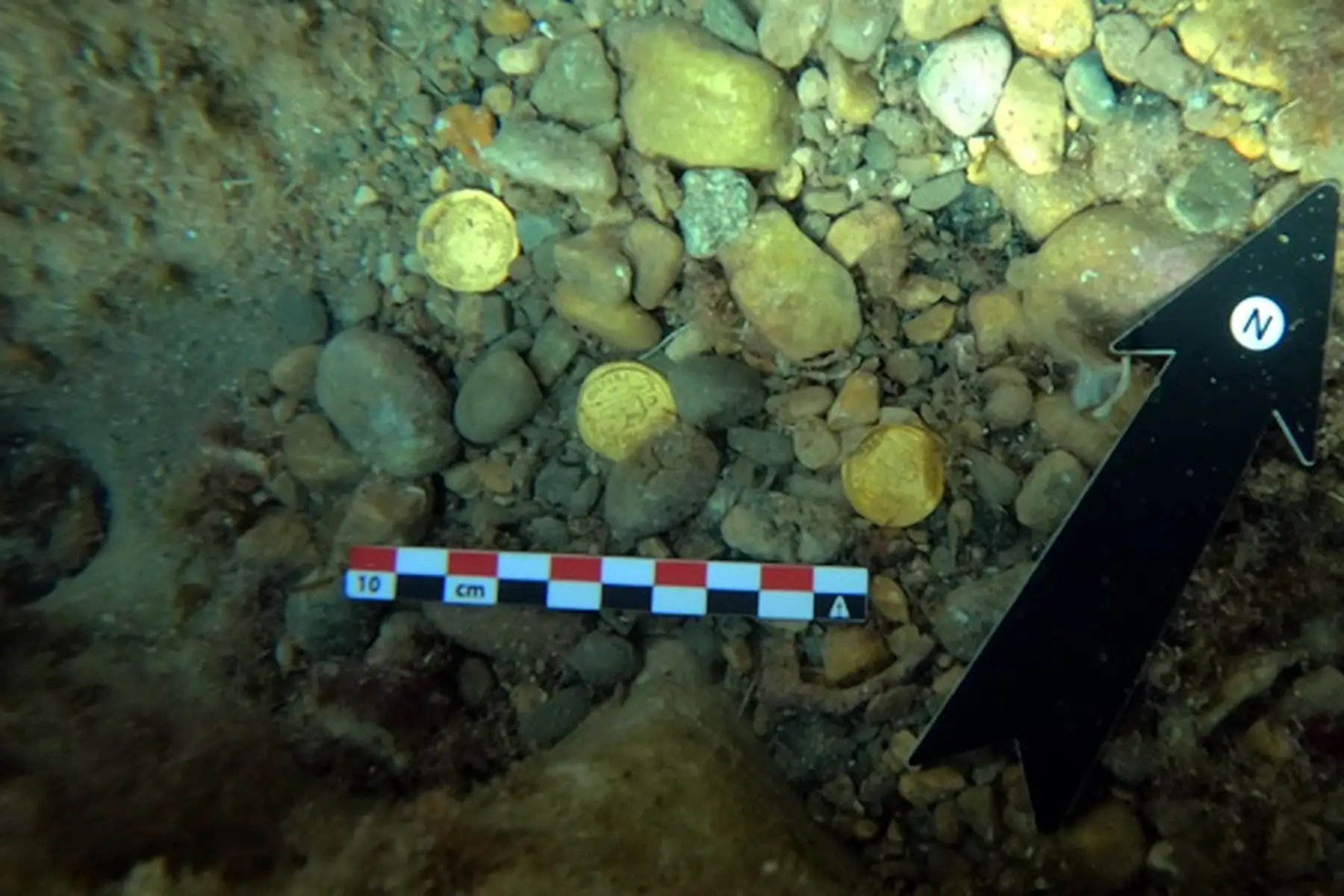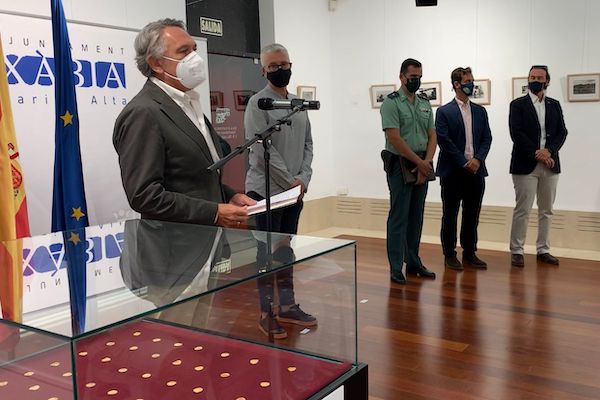Krása
Divers discover a unique treasure trove of gold coins from the fall of the Roman Empire
Categories: Minting - Numismatics , Nálezy nejenom s detektorem v západní Evropě , Nálezy nejenom s detektorem kovů v mořích a oceanech
One of Europe's largest collections of Roman gold coins has been discovered in a shallow shoreline near the city of Xàbia in Alicante, southeastern Spain. The gold solids date from the late 4th to early 5th century; all but one are in excellent condition.
The coins were resting on the seabed off the island of Portitxol - a popular destination for sporting pottersfor sportsmen attracted by the rich marine life here, with its colourful seaweed and rocky bottom. Yet here lay a hitherto unnoticed golden assemblage for more than 1,500 years before it was discovered by freedivers/brothers-in-law Luis Lens and César Gimeno. They first saw a few flashes of light on the seabed, thinking they were modern dimes or perhaps pearl shells glistening in the water. So they took eight pieces with them.
When they returned to the ship, they realized they were ancient gold coins with clear profiles of the Roman emperor. They immediately alerted city officials to their discovery and brought marine archaeologists to the site. Over several dives, the team of archaeologists recovered a total of 53 gold coins, three copper spikes and fragments of lead that may have been part of a chest fitting.
Three of the gold coins were minted during the reign of Emperor Valentinian I (reigned between 364 and 375), seven coins from the reign of Emperor Valentinian II. (375 - 392), 15 solidi of Theodosius I (379 - 394 emperor in the East, between 394 and 395 the last ruler of the Roman Empire). The other seventeen coins represent the coins of the East Roman Emperor Arcadius (395 - 408) and 10 coins of the West Roman Emperor Honorius (384 - 423). One coin has not yet been identified due to poor condition.
"The find represents one of the largest sets of Roman gold coins found in Spain and Europe," said Jaime Molina, professor of ancient history at the University of Alicante and leader of the team of underwater archaeologists. He added that this is an exceptional archaeological and historical find because it can offer a wealth of new information to understand the final stages of the fall of the Western Roman Empire.
Historians point to the possibility that the coins may have been deliberately hidden from looting during the turbulent period. The collection could help illustrate a historical moment of extreme uncertainty associated with the violentarrival of barbarian tribes into Hispania and the final fall of the Roman Empire in the Iberian Peninsula after 409 AD. l.
The coins are now being conserved and studied, and will eventually be exhibited at the Soler Blasco Archaeological and Ethnographic Museum in Xàbia. A special armoured display case with security sensors is also awaiting construction. In the meantime, funding has already been secured for a further archaeological survey of the site, with almost 17,800 Euros (about 450,000 CZK) earmarked.
Portitxol Bay in Xàbia is known for its many underwater archaeological finds. In several archaeological rescue actions organised by the city council, the University of Alicante and the Valencian government, since 2019, theanchors, amphorae, ceramic shards from different periods, numerous metallic materials, artefacts related to ancient navigation, etc. have been saved.
Video
Roman Nemec





Sources: web.ua.es, ali2day.com, dailymail.co.uk
The article is included in categories:





